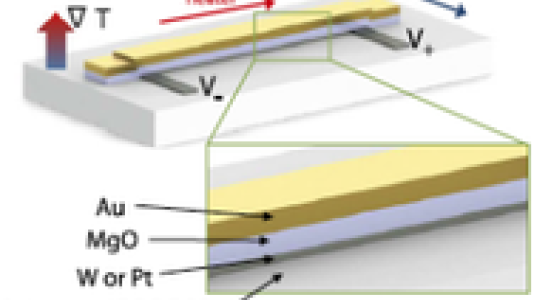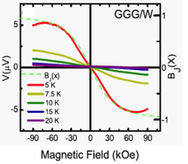
When a thermal gradient is applied across a ferromagnetic material, it can drive a spin current via the spin Seebeck effect. A few years ago, it was shown that this effect also works in ferromagnetic insulators where the charge degree of freedom is strongly gapped. Here, a ‘pure’ spin current results from a thermal imbalance in the population of magnons. In this work, we have shown that the spin Seebeck effect can also occur in paramagnetic insulators that nominally do not support magnons.
The result is surprising and also encouraging as it broadens the class of materials that may be used to generate spin currents, particularly at low temperatures. For example, in geometrically frustrated pyrochlore magnets that host spin ice and spin liquid ground states, the excitations can be quire unusual – such as magnetic monopoles and spinons. Coupling to these excitations and moving them around remains a challenge. Our results imply that we may be able create spin currents from these excitations using local thermal gradients, and detect them via the inverse spin Hall effect. The technique to carry out this measurement was developed in our group, where a patterned Au wire about 10 microns wide was used to deliver the heat locally to the surface of the paramagnet. This results in a large out-of-plane thermal gradient near the surface that drives a spin current out of the underlying paramagnet. The spin current is detected using the inverse spin Hall effect in W or Pt layers on the surface of the paramagnet. The signal is quite large and comparable to what is observed in the more conventional YIG/Pt structures. Note that the Au heater wire and the detector layer are electrically isolated from each other.
Paramagnetic Spin Seebeck Effect,
Stephen M. Wu, John E. Pearson, and Anand Bhattacharya,
Phys. Rev. Lett. 114, 186602 (2015).
